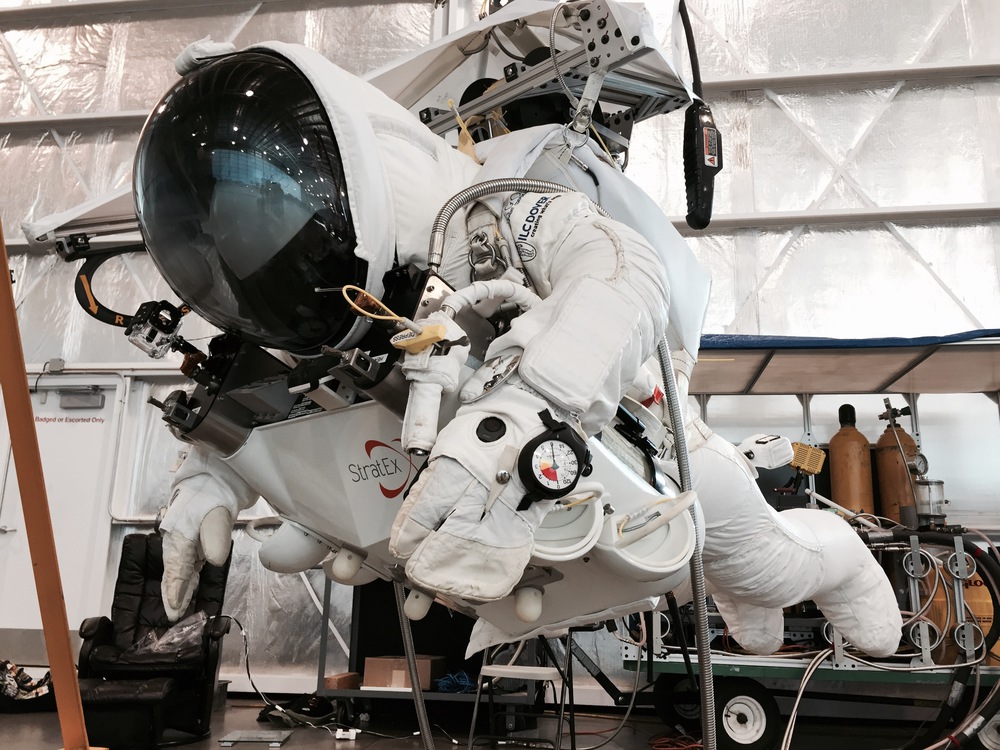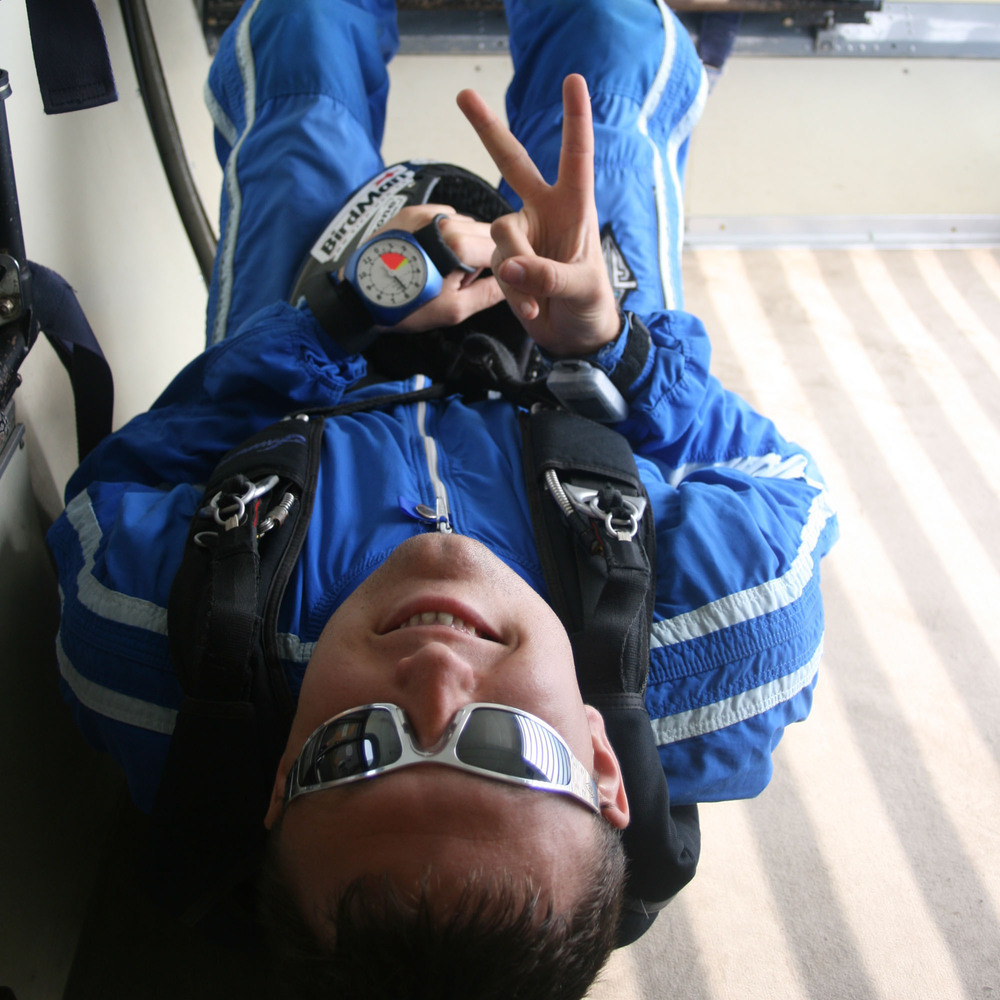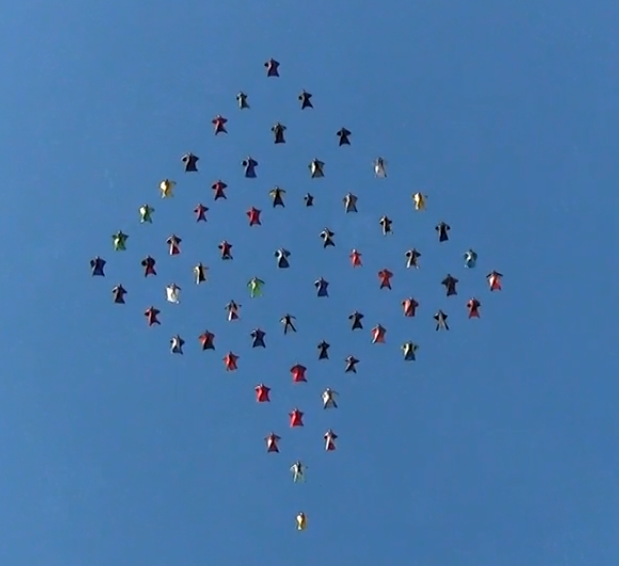Recommended Posts
Ron 10
QuoteLarger flat groups, and competition flat groups tend to take a longer time to set up in
the door, odds are that the exit-exit timing in this case is sufficient to ensure
separation even with drift taken into account.
And if they go out first, then they start at the begining of the exit window....If they go after the headdowns then the time they take to climb out is wasted time....Several people smarter than me have said that putting flat first INCREASES the saftey factor....and that putting the Headdown first DECREASES it.....Whats wrong with being more safe?
QuoteGenerally (although certainly not exclusively) Head down fliers fly faster canopies and
have more experience in the sport
I doubt this....Flat has been around A LOT longer. And most of the people I jump with (Flat) have small canopies.
QuoteEnough to be aware of jump run and where they
should be flying their canopies to reduce the likelihood of a collision from the group
that followed them.
Now I don't fly headdown, but I do 4way....and when I am really turning points I will be the first to tell you that I can't skydive at that speed, and remember the line of flight....I am betting that serious headdown loads can't either.
QuoteIt would be far more accurate to say "headdown USUALLY goes first at zhills"
Because it doesn't always.
The exceptions are when the winds are over 30 knots at altitude, which is when drift is
a more significant component compared to other factors.
Why only with high winds????? What is the majic windspeed?
If it is safer to do it with flat first, and even more safe to do it when the winds are high, why ever change it?
Also like I said several people WAY smarter than me say its better (Brian Burke, Kallend, Windsor...ect) and the BSR's state to put the Slower falling groups first.
(Section 5-7 in spotting)
So eveyone else is wrong?
And no one has yet to give me a good solid answer.
Yes, it can be done headdown first....All I am saying is it is not as effective with the plane having to take go arounds, or as safe as putting Flat out first.
So why do it?
Ron
apoil 0
Quote
This only is a safety concern if you have pilots not able to fully control their canopies or those that have the mindset that they have to hook. Lower/slower canopy has the right of way, and you should'nt force some one to get out last just since they are not willing to fly a pocket rocket.
why not? We "force" them to get out last when they are on a student canopy?
Not to mention that's a twisted way of putting it.
The performance canopies are going to get down and get out of the pattern. That's a good thing. We're not talking about the "have to hook" mentality, but be realistic, if you are flying a fast canopy you are going to land it fast, and quite possibly crosswind. It's out of a concern for everyone's safety not to disrupt the slower pattern with this behavior.
And let's not even get into discussions of folks on their 170's spiraling down in the pattern and then stopping.
***
hmm.. That sounds like a training issue at your dz.
Guess we need yet another BSR.
Hooknswoop 19
QuoteThe performance canopies are going to get down and get out of the pattern. That's a good thing. We're not talking about the "have to hook" mentality, but be realistic, if you are flying a fast canopy you are going to land it fast, and quite possibly crosswind. It's out of a concern for everyone's safety not to disrupt the slower pattern with this behavior.
And let's not even get into discussions of folks on their 170's spiraling down in the pattern and then stopping.
Sounds like a training issue at your DZ.
SDAZ has an awesome system for keeping the landings safe. First person down sets the lnading direction. If you do not wish to land in the same direction as the first person that lnaded, you can land away from the main landing area, in any direction you wish. The only problems I saw was when people did not follow the rules.
Hook
PhreeZone 20
Quotewhy not? We "force" them to get out last when they are on a student canopy?
Not to mention that's a twisted way of putting it.
How many students do you see pulling every jump at 2500 feet? Students out last is more of a pull height concern then a canopy size.
Quotehmm.. That sounds like a training issue at your dz.
Yep.. its the DZO and STA doing the teaching too, and the DZO's not to shabby for 12000+ belly jumps first
And tomorrow is a mystery
Parachutemanuals.com
Ron 10
Steve J has a V90, Box has a V84....So if we are doing a 3 way we should get out before you, Mr Berry, and Pip right?
What if Steve, Box, me, and say Oren with his "big" 136 go out with Annie (136) and Laura (135) together?
It is an issue of the freefall drift....Zhills is plenty big for a 100 way to land safe....an otter load would be no problem.
Ron
kallend 2,027
Quote
Oh well, maybe USPA should put an exit order BSR....hell it is there job to do things like this.
Ron
It's already there.
The only sure way to survive a canopy collision is not to have one.
Ron 10
I was looking at the wrong section....
It does say to have Slow then Fast.....
Like I said before I have heard several reasons to do it this way, and not one good reason to do it the other.
But it will not change until the DZO, and S&TA change...
So until then I will take go arounds if I must. It just seems strange to go against what 90% of the community says is safe, and with out a good reason.
Ron
kallend 2,027
Quote[ I was taught by highly experienced people that you can make ANY exit order work provided there is sufficient communication.
.....
Anything can be made to work with enough communication.
If you only do it one way, you are wrong.
.....
Anything can be made to work with enough communication.
If you only do it one way, you are wrong.
.....
Anything can be made to work with enough communication.
If you only do it one way, you are wrong
.....
Anything can be made to work with enough communication.
If you only do it one way, you are wrong
You are correct. However, some ways are more resistant to poor communication than others. How do you GUARANTEE good communication among skydivers.
The only sure way to survive a canopy collision is not to have one.
Very well put!!!
Conway 1117![]()
quade 4
QuoteIt's already there.
Technically -- no.
A BSR is different than a General Recommendation.
A BSR is a Basic Safety Requirement (SIM Section 2) and must be followed except when specifically waivered. I think you'll find that most of the BSRs that -can't- be waivered are actually backed up by the FARs.
A General Recommendation (SIM Section 5) does not carry the same weight.
For instance, SIM 5 C 1 b 2;
Quote
(2) Provide at least 1,500 feet of ground separation between small groups, adding more as size of the groups increases.
While this might be really nice at some drop zones, it's definately not the norm at most.
The World's Most Boring Skydiver
Quote
The performance canopies are going to get down and get out of the pattern. That's a good thing. We're not talking about the "have to hook" mentality, but be realistic, if you are flying a fast canopy you are going to land it fast, and quite possibly crosswind.
If you're gonna land it crosswind feel free to do it outside of the general landing area and make sure you're not the first down, thereby setting the pattern for following (perhaps relatively new and inexperienced) jumpers.
Much appreciated.
QuoteIt's out of a concern for everyone's safety not to disrupt the slower pattern with this behavior.
Landing crosswind is certainly a good way to disrupt a landing pattern.
QuoteQuote
Around here freefling starts at about 35 jumps, not near enough experience or awareness to know what to do under canopy with a group coming down on top of them.
hmm.. That sounds like a training issue at your dz.
Guess we need yet another BSR.
Where have you been lately? More and more people are going straight to freefly after they get their A-license. I wouldn't trust someone straight off student-status to know how to fly a safe pattern with mixed groups (ie. freefly and/or RW), longer than I could throw them. YMMV.
Unanswered questions are far less dangerous than unquestioned answers
billvon 2,998
> canopies and have more experience in the sport.
Not true most places I jump.
>but the head down group gets there faster and has already descended a bit
>before said flat groups are even opening.
As Bryan Burke has said about a hundred times, you can't rely on vertical separation to keep you safe. Snivels, low pulls, and mals happen all the time.
>if you only ever do it one way, you are wrong.
I think that's a dumb thing to say. Thankfully it's not true for riggers, AFF-I's, competitors, record attempts etc. Occasionally, there is actually a right way to do something, and doing it that way all the time does not make it wrong.
> I was taught by highly experienced people that you can make ANY exit order
> work provided there is sufficient communication.
Of course. Heck, you could make one pass per group, and wait for each group to land before the next group gets out. Most people would consider that suboptimal.
>Larger flat groups, and competition flat groups tend to take a longer time to
> set up in the door . . .
Big ways do indeed take a long time to set up in the door; this is a good argument for putting them out first. Not sure which comp 4-way teams you're talking about, but most of the better ones exit pretty quickly.
>Avoiding the stackup of high performance canopies following low performance
> canopies to the landing area is also a safety issue.
Agreed. However, even a poor stiletto 120 pilot can figure out how to land before that spectre 170, even if he opens 30 seconds after him.
Rdutch 0
Quote
>Larger flat groups, and competition flat groups tend to take a longer time to
> set up in the door . . .
Not sure which comp 4-way teams you're talking about, but most of the better ones exit pretty quickly.
Actually, most of the better teams take their time in the door, Ive seen Majic, take at least 30 seconds many, many times to climb out and exit. Frost, the Norgies and many other team's. Ive talked to our pilots many time's and they turn the green light on 20+ seconds early just to account for the time taken. It's better to take your time and set up right, than to rush it and have a bad exit when training/competing.
QuoteAvoiding the stackup of high performance canopies following low performance
> canopies to the landing area is also a safety issue.
Agreed. However, even a poor stiletto 120 pilot can figure out how to land before that spectre 170, even if he opens 30 seconds after him.
Yes but then your obligating the 120 pilot to spiral down through the other canopies, A good order should be exit order/landing order.
Its a much missed saftey factor that vertical separation is a necessary thing. How many times do you see the whole load land at the same time? Nothing is worse than setting your vertical separation and then having the person that exited after you spiral down lower than you, now you have someone lower and behind you, there is a definite saftey issue there. Canopy size is an issue, but I can take my 96, be the first one to open and still land last, if I choose to.
Ray
Small and fast what every girl dreams of!
billvon 2,998
Not at all. If everyone opens with good horizontal separation, then they spiral down in their own area. If they overlap because you're relying on vertical rather than horizontal separation (a bad thing) then you have that problem.
>A good order should be exit order/landing order.
That makes little sense. People organize themselves by group, not by canopy type. What do you do with an 8 way freefly with canopies from a Crossfire 94 to a Spectre 150, and an 8 way RW group with canopies from a Samurai 92 to Silhouette 170? Do you tell them they have to split up?
A better method is to guarantee adequate horizontal separation and let the faster canopies land first.
>Its a much missed saftey factor that vertical separation is a necessary thing.
Vertical separation simply doesn't work. Canopies snivel, altimeters are inaccurate, and people have cutaways. Unless you can guarantee that none of those things happen, you need horizontal separation.
The ideal scenario is to have everyone open at the same altitude simultaneously with good horizontal separation; that way the faster canopies land first and the slower canopies land last without anyone spiraling at all. Putting belly out first helps accomplish this, although as I mentioned above you can never rely on vertical separation.
>How many times do you see the whole load land at the same time?
Never seen that.
>Nothing is worse than setting your vertical separation and then having the
> person that exited after you spiral down lower than you . . .
This happens on just about every jump I've ever been on, and it's just not an issue. When I have my 119, I spiral down and land first. When I have my 170, I hang out, fly a wide pattern, and land last. Pretty straightforward. I'm not sure why you would be worried about someone who exited after you (but quite possibly opened below you) spiral down and land before you.





.thumb.jpg.4bb795e2eaf21b8b300039a5e1ec7f92.jpg)
I only have one way of assembling my 3-ring releases. Am I wrong?
Sometimes there is only one "best" way to do something. Generally the "best" way to do something can change given unusual circumstances.
I prefer the;
Surfers (if any)
Belly-largest to smallest group
Free-flier-largest to smallest group
AFF
Tandem
Wing suits
High pullers
Exit order.
As the head winds increase on jump run, leave more room between exits. If the first group out is a large belly group, start the climb out eraly enough to allow for the longer climb out time. If the second group is a largish (can't have a lot of large groups on one plane) belly group, the climbout time will ensure seperation. When in doubt, leave plenty of room.
Hook
Share this post
Link to post
Share on other sites